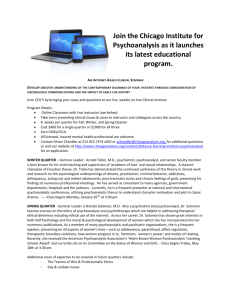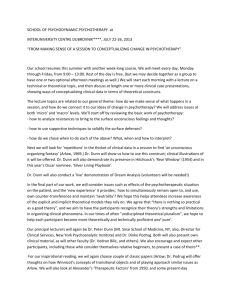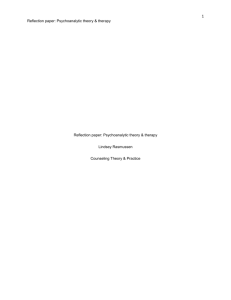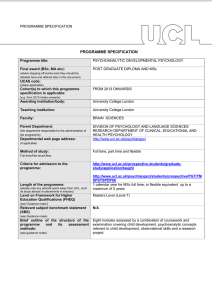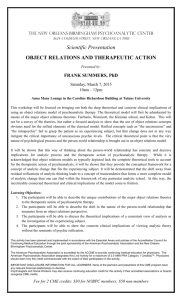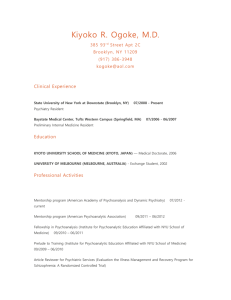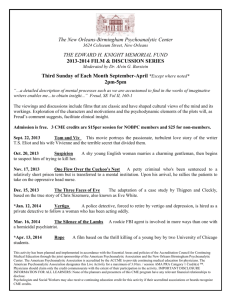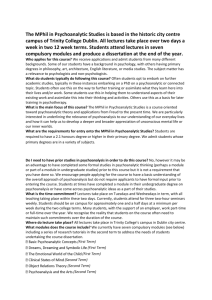Theoretical Pluralism and the Working Clinician
advertisement
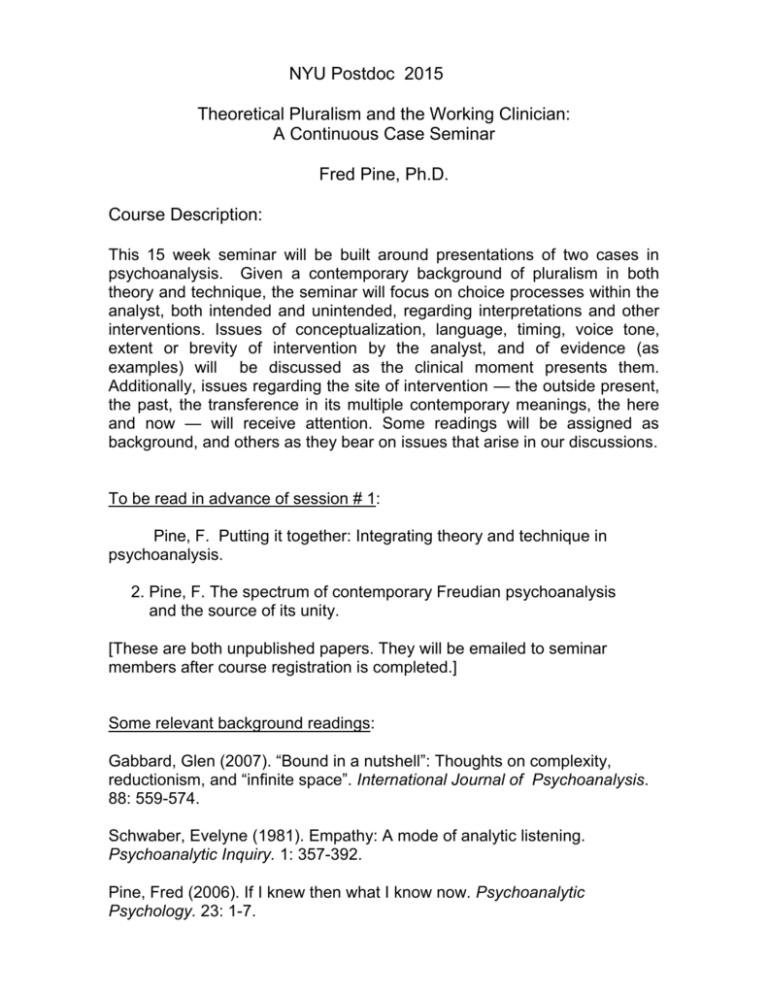
NYU Postdoc 2015 Theoretical Pluralism and the Working Clinician: A Continuous Case Seminar Fred Pine, Ph.D. Course Description: This 15 week seminar will be built around presentations of two cases in psychoanalysis. Given a contemporary background of pluralism in both theory and technique, the seminar will focus on choice processes within the analyst, both intended and unintended, regarding interpretations and other interventions. Issues of conceptualization, language, timing, voice tone, extent or brevity of intervention by the analyst, and of evidence (as examples) will be discussed as the clinical moment presents them. Additionally, issues regarding the site of intervention — the outside present, the past, the transference in its multiple contemporary meanings, the here and now — will receive attention. Some readings will be assigned as background, and others as they bear on issues that arise in our discussions. To be read in advance of session # 1: Pine, F. Putting it together: Integrating theory and technique in psychoanalysis. 2. Pine, F. The spectrum of contemporary Freudian psychoanalysis and the source of its unity. [These are both unpublished papers. They will be emailed to seminar members after course registration is completed.] Some relevant background readings: Gabbard, Glen (2007). “Bound in a nutshell”: Thoughts on complexity, reductionism, and “infinite space”. International Journal of Psychoanalysis. 88: 559-574. Schwaber, Evelyne (1981). Empathy: A mode of analytic listening. Psychoanalytic Inquiry. 1: 357-392. Pine, Fred (2006). If I knew then what I know now. Psychoanalytic Psychology. 23: 1-7. Theoretical pluralism and the working clinician: A continuous case seminar. Fred Pine, Ph.D. The learning objectives for this clinical course follow for 15 sessions. The content of each session will be the reported clinical summaries of individual sessions. It is the overall aim to use the fact of theoretical pluralism as a wedge to separate seminar members from too close an attachment to favored single theories. In every session, seminar members will be expected to meet the challenge of making patient-data-based hypotheses about which interventions might forward the therapeutic work, and to justify those hypotheses in terms of those data. They will learn to be able to separate, on the one hand, their favored theoretical positions and theoretically derived clinical inferences from, on the other hand, evidence in the verbal, nonverbal, and affective communications of the patient. They will learn to see that the current pluralism in psychoanalytic theorizing requires that the clinician fall back on attentive listening to the material of the session, weakening their attachment to heavily single-theory weighted interventions. Objectives: 1. Students will be able to identify relevant data from the clinical material presented that is used as the basis for one major psychoanalytic theory. 2. Students will be able to interpret clinical data in accordance with at least contrasting two theoretical perspectives. 3. Students will be able to identify relevant data from the clinical material that is used to justify at least two versions of contemporary psychoanalytic theory. 4. Students will be able to locate within the presented clinical material data that justifies opposing or contradictory aspects of psychoanalytic theory. 5. Students will be able to evaluate the interpretation of data supporting one psychoanalytic theory. 6. Students will be able to contrast three interpretations of the data of a single session. 7. Students will be able to assess the arguments supporting one interpretation of a session. 8. Students will be able to describe how one theoretical formulation offers a critique of the interpretation of data from another theoretical point of view. 9. Students will be able to describe an interpretation of the clinical data in terms of a selfpsychology model. 10. Students will be able to provide an interpretation of the clinical data in terms of an object-relations model. Students will be able to provide an interpretation of the clinical data in terms of a Drive model. 11. Students will be able to provide an interpretation of the clinical data in terms of egopsychological model. 12. Students will evaluate the advantages and disadvantages of a single model over a mixed model. 13. Students will evaluate the clinical disadvantages of mixing models. 14. Students will apply the four psychologies to a case vignette of their own. 15. Students will be able to describe a fifth model that might be added to the fourpsychologies discussed this semester.
